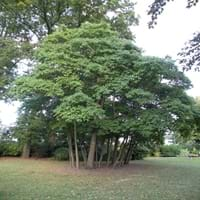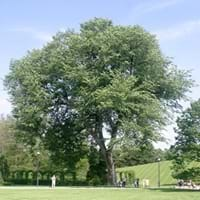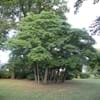Life Span
Perennial
Perennial
Origin
North America, Northeastern United States, Mid-Atlantic United States, Southeastern United States, Central United States, South-Central United States, Texas, Canada
North America
Types
Not Available
Water elm
Habitat
Dappled Shade, Sunny Edge, Woodland Garden Canopy
Floodplains, Hillside, stream banks, Swamps, Upland
USDA Hardiness Zone
3-9
3-9
Sunset Zone
Not Available
1a, 1b, 2a, 2b, 3a, 3b, 4, 5, 6, 7, 8, 9, 10, 11, 14, 15, 16, 17, 18, 19, 20, 21
Habit
Oval or Rounded
Upright/Erect
Flower Color
Yellow green, Chartreuse
Green
Flower Color Modifier
Bicolor
Bicolor
Fruit Color
Green, Indigo, Black
Tan
Leaf Color in Spring
Green
Light Green
Leaf Color in Summer
Green
Dark Green
Leaf Color in Fall
Yellow, Red, Orange, Yellow green, Bronze, Orange Red
Light Yellow
Leaf Color in Winter
Not Available
Not Available
Leaf Shape
Ovate
Oblique base
Plant Season
Spring, Summer, Fall
Spring, Summer, Fall, Winter
Sunlight
Full Sun, Partial Sun
Full Sun
Type of Soil
Clay, Loam, Sand
Loam
The pH of Soil
Acidic, Neutral, Alkaline
Acidic, Neutral
Soil Drainage
Average
Average
Bloom Time
Spring
Early Spring
Tolerances
Not Available
Cold climate, Drought, Pollution, Salt
Where to Plant?
Ground
Ground
How to Plant?
Seedlings
Rooted stem cutting, Seedlings, Stem Planting
Plant Maintenance
Medium
Low
Watering Requirements
Average Water Needs, Do Not over Water
Average Water Needs, Requires regular watering, Requires watering in the growing season, Water Deeply
In Summer
Lots of watering
Ample Water
In Spring
Moderate
Average Water
In Winter
Average Water
Average Water
Soil pH
Acidic, Neutral, Alkaline
Acidic, Neutral
Soil Type
Clay, Loam, Sand
Loam
Soil Drainage Capacity
Average
Average
Sun Exposure
Full Sun, Partial Sun
Full Sun
Pruning
Remove damaged leaves, Remove dead branches, Remove dead leaves
Remove dead branches, Remove dead or diseased plant parts, Remove hanging branches
Fertilizers
Nitrogen, Phosphorous
Fertilize every year, fertilize in growing season, Nitrogen, Phosphorous, Potassium
Pests and Diseases
Foliage diseases
Bark beetles, Beetles, Borers, Mites, Moth, Red blotch, Scale
Plant Tolerance
Drought
Cold climate, Drought, Salt
Flowers
Insignificant
Insignificant
Flower Petal Number
Single
Single
Fragrant Bark/Stem
Yes
No
Foliage Texture
Medium
Medium
Foliage Sheen
Matte
Matte
Attracts
Insects
Not Available
Allergy
Dermatitis, Diaphoresis
allergic reaction, Asthma
Aesthetic Uses
Not Used For Aesthetic Purpose
Landscape Designing
Beauty Benefits
Skin Problems
No Beauty Benefits
Environmental Uses
Air purification
Absorbs greenhouse gases, Absorbs huge amounts of CO2, Air purification, Food for birds, Forms dense stands, Nesting sites for birds, Prevent Soil Erosion, Shelter for wildlife, Wildlife
Medicinal Uses
Alterative, Anodyne, Antirheumatic, Antiseptic, Carminative, Diaphoretic, Diuretic
Antispasmodic, Astringent
Part of Plant Used
Leaves
Bark, Stem, Tree trunks, Wood
Other Uses
Used as a condiment, Used in making tea, Used to flavour soups
Used as firewood, Used for woodware, Used in biomass, Used in construction, Used in Furniture, Used in paper industry, Used in pulpwood and lumber production, Wood is used for making furniture, Wood is used for ship building, Wood is used fore making tools, Wood is used in construction, Wood log is used in making fences
Used As Indoor Plant
No
No
Used As Outdoor Plant
Yes
Yes
Garden Design
Shade Trees, Street Trees
Feature Plant, Shade Trees, Street Trees
Botanical Name
SASSAFRAS albidum
ULMUS americana
Common Name
Sassafras
American Elm
In Hindi
Sassafras
अमेरिकी एल्म
In German
Sassafras
amerikanische Ulme
In French
Sassafras
orme d'Amérique
In Spanish
Sasafrás
olmo americano
In Greek
σασάφρα
American Elm
In Portuguese
sassafrás
olmo americano
In Polish
Sassafras
Amerykański wiązu
In Latin
Sassafras
Latin ulmo
Phylum
Magnoliophyta
Magnoliophyta
Class
Magnoliopsida
Magnoliopsida
Family
Lauraceae
Ulmaceae
Clade
Angiosperms, Magnoliids
Angiosperms, Eudicots, Rosids
Tribe
Cinnamomeae
Not Available
Subfamily
Lauroideae
Not Available
Importance of Sassafras and Elm
Want to have the most appropriate plant for your garden? You might want to know the importance of Sassafras and Elm. Basically, these two plants vary in many aspects. Compare Sassafras and Elm as they differ in many characteristics such as their life, care, benefits, facts, etc. Every gardener must at least have the slightest clue about the plants he wants to plant in his garden. Compare their benefits, which differ in many ways like facts and uses. The medicinal use of Sassafras is Alterative, Anodyne, Antirheumatic, Antiseptic, Carminative, Diaphoretic and Diuretic whereas of Elm is Antispasmodic and Astringent. Sassafras has beauty benefits as follows: Skin Problems while Elm has beauty benefits as follows: Skin Problems.
Compare Facts of Sassafras vs Elm
How to choose the best garden plant for your garden depending upon its facts? Here garden plant comparison will help you to solve this query. Compare the facts of Sassafras vs Elm and know which one to choose. As garden plants have benefits and other uses, allergy is also a major drawback of plants for some people. Allergic reactions of Sassafras are Dermatitis and Diaphoresis whereas of Elm have allergic reaction and Asthma respectively. Having a fruit bearing plant in your garden can be a plus point of your garden. Sassafras has no showy fruits and Elm has no showy fruits. Also Sassafras is not flowering and Elm is not flowering . You can compare Sassafras and Elm facts and facts of other plants too.





